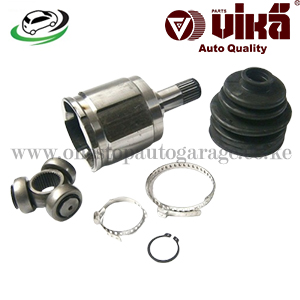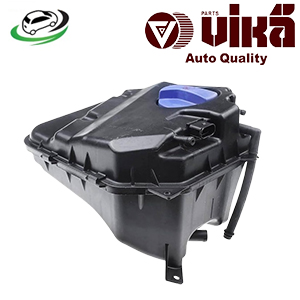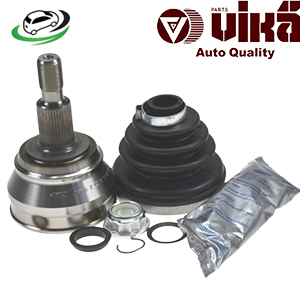-15%
Get Front Outer CV Joint Kit AUDI A3 2001-2007/TT/TTS Coupe 1999-2006 / VW Golf 1992-1998/Beetle 1998-2010/Bora 1999-2011 357498099E
The drive shaft CV (Constant Velocity) joint kit is a crucial component in a vehicle’s drivetrain system, responsible for transmitting power from the engine to the wheels while accommodating the suspension’s movement. Here’s an in-depth exploration of the drive shaft CV joint kit, its function, components, types, common issues, maintenance, and replacement.
Function of the Drive Shaft CV Joint Kit
The primary role of the drive shaft CV joint kit is to ensure smooth and efficient power transfer from the engine to the wheels. The CV joints in the kit allow the drive shafts to flex and move while maintaining constant rotational speed and power transfer. Their functions include:
- Power Transmission: CV joints transmit the rotational power from the engine to the wheels, allowing the vehicle to move.
- Accommodating Movement: They accommodate the up-and-down movement of the suspension and steering angles, ensuring smooth power delivery even when the wheels are turned or the suspension is compressed or extended.
- Reducing Vibration: Properly functioning CV joints minimize vibrations and noise, providing a smoother and quieter driving experience.
Components of a Drive Shaft CV Joint Kit
A typical drive shaft CV joint kit includes several key components:
- CV Joints: These are the main components of the kit and come in different types, such as ball-type or tripod-type joints. They allow for flexibility and power transfer while accommodating suspension movement.
- Boots: Rubber or neoprene boots cover the CV joints, protecting them from dirt, debris, and moisture while containing the lubricant.
- Grease: Specialized grease is used to lubricate the CV joints, ensuring smooth operation and reducing friction.
- Clamps: Clamps secure the boots to the CV joints and drive shaft, preventing the grease from escaping and keeping contaminants out.
Types of CV Joints
Drive shaft CV joints come in different types, each suited for specific applications:
- Ball-Type CV Joints:
- Function: Uses ball bearings to handle power transfer and angular movement.
- Applications: Commonly used in front-wheel-drive vehicles and some rear-wheel-drive vehicles.
- Pros: Good at handling high angles and providing smooth power transfer.
- Cons: Can be more prone to wear and require more frequent maintenance.
- Tripod-Type CV Joints:
- Function: Uses a tripod arrangement of bearings to handle power transfer and accommodate angular movement.
- Applications: Typically used in the inner CV joints of front-wheel-drive vehicles.
- Pros: Provides smooth operation at varying angles and is durable.
- Cons: Generally less capable of handling extreme angles compared to ball-type joints.
Importance of the Drive Shaft CV Joint Kit
The drive shaft CV joint kit is essential for several reasons:
- Smooth Power Transfer: Ensures consistent and smooth power transfer from the engine to the wheels, providing reliable vehicle performance.
- Handling Suspension Movement: Accommodates the movement of the suspension and steering, ensuring smooth operation even on uneven surfaces or during sharp turns.
- Preventing Vibration and Noise: Properly functioning CV joints reduce vibrations and noise, contributing to a quieter and more comfortable driving experience.
- Extending Drivetrain Life: By maintaining smooth operation and reducing wear, the CV joint kit helps extend the life of the drivetrain components.
Common Issues with Drive Shaft CV Joint Kits
Over time, the drive shaft CV joint kit can develop issues that affect its performance:
- Boot Damage: The boots protecting the CV joints can tear or crack, allowing dirt and moisture to enter and contaminating the grease.
- Grease Leakage: Leaking grease due to damaged boots or seals can lead to inadequate lubrication and increased wear on the CV joints.
- Wear and Tear: Continuous use can cause the CV joints to wear out, leading to clunking noises, vibrations, or decreased performance.
- Improper Alignment: Misalignment of the drive shaft or CV joints can cause additional stress and wear, leading to premature failure.
Signs of a Failing Drive Shaft CV Joint Kit
Identifying the signs of a failing CV joint kit early can help prevent more severe drivetrain issues:
- Clunking or Knocking Noises: Loud clunking or knocking noises when accelerating, turning, or going over bumps can indicate worn or damaged CV joints.
- Vibrations: Excessive vibrations felt through the steering wheel or the vehicle’s body, particularly at higher speeds, can signal CV joint issues.
- Clicking Noises: Clicking or popping noises when turning the vehicle, especially during sharp turns, can be a sign of a failing CV joint.
- Grease on Wheels or Tires: Visible grease on the inner side of the wheels or tires can indicate a torn boot and grease leakage.
- Difficulty Steering: Problems with steering or handling, particularly during turns, can be a result of worn CV joints.
Maintenance and Prevention
Proper maintenance can help ensure the longevity and effectiveness of the drive shaft CV joint kit:
- Regular Inspections: Check the CV joints and boots regularly for signs of wear, damage, or leaks.
- Boot Condition: Inspect the condition of the CV boots and replace them if they show signs of cracking, tearing, or other damage.
- Grease Levels: Ensure the CV joints are properly lubricated and that the grease is not leaking.
- Alignment: Maintain proper alignment of the drive shaft and suspension components to reduce stress on the CV joints.
Replacement of the Drive Shaft CV Joint Kit
Replacing a drive shaft CV joint kit can be a complex process but is essential for maintaining drivetrain performance. Here’s a general guide:
- Preparation:
- Tools and Materials: Gather necessary tools, including a jack, jack stands, wrenches, and the replacement CV joint kit.
- Safety Measures: Ensure the vehicle is securely supported on jack stands and the engine is off and cool.
- Remove the Drive Shaft:
- Lift Vehicle: Raise the vehicle and remove the wheel to access the drive shaft.
- Disconnect Drive Shaft: Remove any bolts or fasteners connecting the drive shaft to the differential or transmission.
- Remove Old CV Joints:
- Remove CV Joints: Carefully remove the old CV joints from the drive shaft, noting the orientation and position of each component.
- Install New CV Joints:
- Install New CV Joints: Attach the new CV joints to the drive shaft, ensuring they are properly aligned and securely fastened.
- Lubricate: Apply the recommended grease to the new CV joints if not pre-lubricated.
- Reinstall Drive Shaft:
- Reconnect Drive Shaft: Reattach the drive shaft to the differential or transmission, ensuring all bolts and fasteners are tightened to the manufacturer’s specifications.
- Refit Wheel: Reinstall the wheel and lower the vehicle to the ground.
- Test Drive:
- Performance Check: Start the engine and take the vehicle for a test drive, paying attention to any unusual noises or vibrations.
Follow us on Facebook for more parts.



